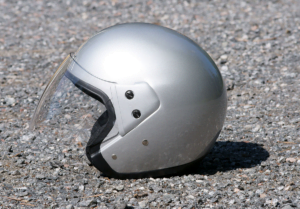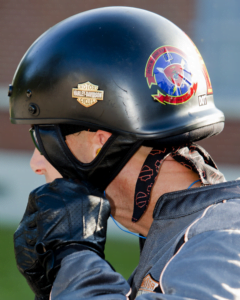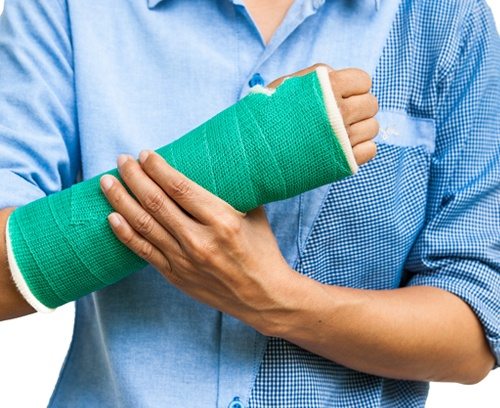
Riding a motorcycle is an exhilarating experience that offers a unique sense of freedom and adventure. However, it’s crucial to prioritize safety while enjoying the open road.
Wearing the best motorcycle helmet for you can make all the difference in protecting your head and potentially saving your life in the event of an accident.
If you have suffered injuries or property damage in a motorcycle crash, you may be able to recover your losses. Call 407-846-2240 for a free consultation with the Orlando motorcycle accident attorneys at the Martinez Manglardi personal injury law firm.
The Importance of Choosing the Best Motorcycle Helmet
Before diving into the specifics of choosing the best motorcycle helmet for you, let’s first understand why wearing a helmet is so important. According to the Centers for Disease Control and Prevention (CDC), motorcycle helmets saved an estimated 1,872 lives in 2017 alone. Furthermore, an additional 749 lives could have been saved if all motorcyclists had worn helmets. These statistics highlight the critical role that helmets play in reducing the severity of head injuries in motorcycle accidents.
It’s important to note that while Florida does not mandate wearing a motorcycle helmet by law, all riders should prioritize their safety and wear a helmet regardless of legal requirements. Protecting your head should be a top priority every time you get on your motorcycle.
Types of Motorcycle Helmets
When it comes to choosing a motorcycle helmet, there are several types to consider. Each type offers different levels of protection and features. The three main designs are full-face, 3/4, and 1/2 helmets.
- Full Face Helmet: The Best Helmet Choice

The full-face helmet is widely regarded as the best motorcycle helmet option among the three designs. It offers the most coverage, protecting your head and neck comprehensively. One of the distinguishing features of a full-face helmet is the presence of a chin bar, which provides additional protection in the event of an impact. Additionally, full-face helmets protect from environmental elements such as inclement weather and debris. If you prioritize safety and want maximum coverage, a full-face helmet should be your go-to choice.
- 3/4 Helmet: The Middle Ground

The 3/4 helmet, also known as an open-face helmet, covers the top, sides, and back of your head, but lacks a chin bar. While it offers less protection compared to a full-face helmet, it still provides a significant level of coverage. Many riders prefer 3/4 helmets for their open feel and enhanced visibility. However, it’s important to note that the absence of a chin bar leaves the lower face vulnerable in the event of an accident.
- 1/2 Helmet: Minimal Coverage

The 1/2 helmet, also known as a half helmet or a brain bucket, provides the least coverage among the three designs. It only covers the top of the head, leaving the face, sides, and back exposed. While 1/2 helmets offer minimal protection, they are popular among riders who prefer a lightweight and minimalist design. However, it’s crucial to understand that the trade-off for this comfort and style is a reduced level of safety.
Key Features of Safe Motorcycle Helmets
When evaluating different motorcycle helmets, it’s important to consider the key features that contribute to their safety. Here are three essential features that you should look for:
- Shell Construction: The First Line of Defense
The shell construction of a helmet is its first line of defense against impact. Look for helmets with a shell made of thermoplastic or reinforced composite materials such as polycarbonate. These materials provide high strength and impact resistance, ensuring that your head is well-protected in the event of a crash.
- Impact-Absorbing Liner: Protection for Your Head
The impact-absorbing liner is an inner component of the helmet that provides cushioning and absorbs shock during an impact. It is typically made of expanded polystyrene (EPS) foam. This liner not only enhances comfort but also plays a crucial role in protecting your head from severe injuries. A well-designed impact-absorbing liner can significantly reduce the force of an impact and minimize the risk of head trauma.
- Secure Chin Strap: Proper Helmet Fit
A motorcycle helmet can only do its job effectively if it fits properly and stays securely in place during a ride. A secure chin strap is essential for keeping the helmet snugly fitted to your head. Look for helmets with sturdy chin straps and solid rivets that ensure a reliable and comfortable fit. Avoid helmets with plastic buckles that may break easily in the event of an accident.
Understanding Motorcycle Helmet Safety Standards
To ensure that motorcycle helmets meet certain safety standards, various organizations have established certification criteria. Here are some of the most common safety standards you should be aware of:
- Snell Memorial Foundation (M-95 / M2000)
The Snell Foundation is an independent organization that sets rigorous standards for helmet safety. While Snell certification is not legally required, their testing procedures go beyond the minimum criteria to thoroughly assess helmets in various aspects. Snell-certified helmets undergo impact testing, positional stability (roll-off) tests, dynamic retention tests, chin bar tests, shell penetration tests, and face shield penetration tests. Choosing a helmet with Snell certification can provide an additional level of confidence in its safety.
- Department of Transportation (DOT FMVSS218)
The DOT standard, also known as FMVSS218, is the technical standard that defines the minimum safety criteria for motorcycle helmets in the United States. Helmets that meet DOT requirements are considered road-worthy and legal for use on public roads. The DOT testing procedures are similar to those of the Snell Foundation, but the judged values and criteria may differ slightly. It’s important to note that DOT certification is self-certified by manufacturers, meaning they test and certify their helmets in their labs.
- European Standard 22/05
In Europe, the ECE 22/05 standard is widely used to assess the safety of motorcycle helmets. It encompasses impact testing, retention testing, and additional tests for chin strap slippage, abrasion, and durability. The ECE standard also includes a test for helmet shell rigidity, which is not part of the Snell or DOT testing procedures.
- Other Standards: BSI 6658-85 Type A and SHARP
Apart from the Snell, DOT, and ECE standards, there are other certification standards that helmets can adhere to. The BSI 6658-85 Type A standard is similar to the Snell testing scheme and incorporates chin strap slippage, retention, and abrasion testing. SHARP (Safety Helmet Assessment and Rating Program) is a testing and rating system specific to helmets sold in the United Kingdom. SHARP rates helmets on a star rating system based on their impact protection.
It’s important to note that certification standards provide a baseline for helmet safety, but they are not the sole determinant of a helmet’s effectiveness. Consider these standards along with other factors such as design, construction materials, and customer reviews when choosing a helmet.
When to Replace Your Motorcycle Helmet
Over time, helmets can experience wear and tear, which can compromise their safety and effectiveness. While there is no set expiration date for helmets, it is generally recommended to replace them every five years, even if they have not been involved in any accidents. This recommendation is based on studies conducted by helmet manufacturers and organizations such as the Snell Memorial Foundation. However, it’s important to remember that the deterioration of a helmet is gradual, and many factors can affect its lifespan.
Regular maintenance and care can help prolong the life of your helmet and ensure its continued effectiveness. Follow the manufacturer’s care instructions, use mild soap for cleaning, and avoid exposing your helmet to harsh chemicals or petroleum-based cleaning fluids. Additionally, regularly inspect your helmet for any signs of damage or degradation, such as cracks, loose padding, or worn-out straps. If you notice any significant damage or if your helmet has been involved in an accident, it is crucial to replace it immediately.
Choosing the Right Fit
One of the most crucial aspects of a motorcycle helmet is its fit. An ill-fitting helmet can compromise both comfort and safety. Here are some tips to ensure you find the right fit:
- Measure Your Head: Use a cloth tape measure to measure the circumference of your head, starting just above your eyebrows and circling the thickest point at the back. Refer to a helmet size chart to determine the appropriate size for your head measurement.
- Try It On: When trying on a helmet, pay attention to any pressure points on your forehead or the sides of your head. If you feel excessive pressure, the helmet may not be the best motorcycle helmet shape for your head. It’s essential to find a helmet that fits snugly but not too tight, providing even pressure around your head without uncomfortable pressure points.
- Check for Movement: Once you have the helmet on, shake your head gently to test its stability. A properly fitting helmet should stay in place and not move excessively. If the helmet shifts or slides around, it may be too loose and not provide adequate protection.
- Consider Adjustability: Some helmet models offer replaceable cheek pads and liners that allow you to customize the interior fit of the helmet. These features can be beneficial in achieving a more personalized and comfortable fit. However, it’s important to follow the manufacturer’s guidelines and avoid any alterations that may compromise the helmet’s integrity.
Additional Considerations for Best Motorcycle Helmet Safety
While choosing the best motorcycle helmet is crucial, it’s also important to consider other factors that contribute to overall motorcycle safety. Here are a few additional considerations:
- Visibility: Opt for helmets with built-in reflective elements or choose helmets in high-visibility colors to enhance your visibility on the road. Increasing your visibility can significantly reduce the risk of accidents caused by other drivers not seeing you.
- Eye Protection: Invest in a helmet with a built-in visor or a separate face shield to protect your eyes from debris, wind, and insects. Clear or tinted visors can improve visibility and enhance riding comfort in different weather conditions.
- Communication Systems: If you frequently ride with a group or rely on navigation systems, consider helmets that are compatible with communication systems or have built-in Bluetooth technology. These features can enhance rider communication and make your rides more enjoyable.
- Regular Maintenance: Keep your helmet clean and well-maintained to ensure its longevity and effectiveness. Follow the manufacturer’s care instructions and regularly inspect your helmet for any signs of damage.
Motorcycle Accident Attorneys
Remember, accidents can still happen, even with the best safety precautions. If you find yourself involved in a motorcycle accident, it’s essential to seek legal representation from experienced professionals. The Orlando Motorcycle Accident Attorneys at the Martinez Manglardi personal injury law firm have been helping accident victims recover losses for 35 years. Call 407-846-2240 to schedule a free consultation. With their convenient locations throughout Central Florida, they can guide you through the legal process and ensure your rights are protected. Stay safe and enjoy your rides responsibly.





